Best Cover Designer for Bmaw Erotica Books
How do you design a book cover? The quick answer is: hire a professional.
While indie authors work with a limited budget, one area where you can't afford to do it yourself is the cover design. Your book will be competing against thousands of similarly priced books — almost all of which will have professionally designed covers. You may save money upfront by creating your own jacket design on Photoshop, but you will lose out in the long run both in book sales and in your personal brand as an author.
In this post, we'll show you how to find the right designer and get the best results for your book. And if you're interested to know how much it'll cost, our infographic on cover design includes averages taken from our marketplace — and you might be surprised by how affordable it can be.
If you're ready to roll, here's how to design a book cover with the help of a professional:
1. Find inspiration and ideas for your cover
Just because you're working with a professional doesn't mean that you leave all the creative work to them. This is your book, after all, and it helps to come to the designer with some clear ideas of what you might want.
Remember that the cover is the first medium of communication between your book and the target market (aka the people who are likely to buy the kind of title you're writing). To create a cover that sells, you need to know what visual cues your potential readers respond to — meaning you should take inspiration from other successful books in your genre.
Research top-selling books in your niche or genre
Publishers are always trying to communicate to their target market that this book right here is the one for them, so if you look at bestselling titles in a certain genre, you'll likely notice recurring visual styles and motifs. In particular, here are a few things to keep your eye out for as you analyze book covers in your niche:
Visual motifs. Are there certain types of images that crop up again and again? For example, in 2020, we found that 50% of covers across all Fantasy categories had a representation of a character. This would suggest that having a character on the cover is a trend and a genre indicator.
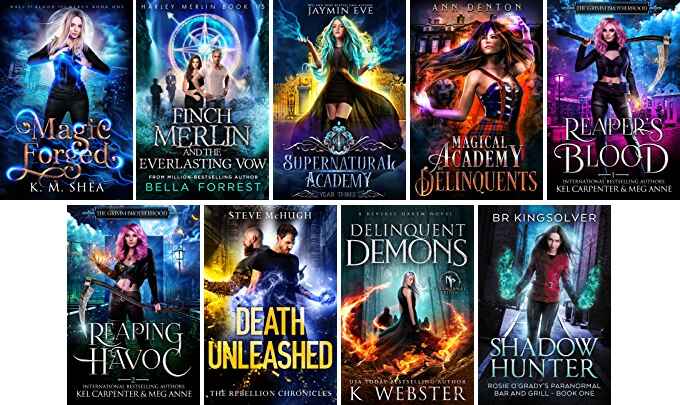
Of course, it helps to understand what designs are working outside of your niche as well — while you want to indicate your genre through the cover design, you don't want to be too married to overused tropes and clichés.
Design techniques. Even though authors won't need to know exactly how the book jacket "sausage" is made, understanding the three main design techniques can help you make informed decisions regarding cost and style.
- Stock image manipulation. This is where designers find, license, combine, and augment images (often photos) from image libraries like Shutterstock.
- Illustrations. Not all cover designers are illustrators — but many are. They can either pen new designs on a digital tablet or combine licensed illustrations from image libraries.
- Original photography. Perhaps the most expensive option, as it requires commissioning a photographer, stylist, and studio space specifically for the cover.
These techniques are arranged in general order of cost.
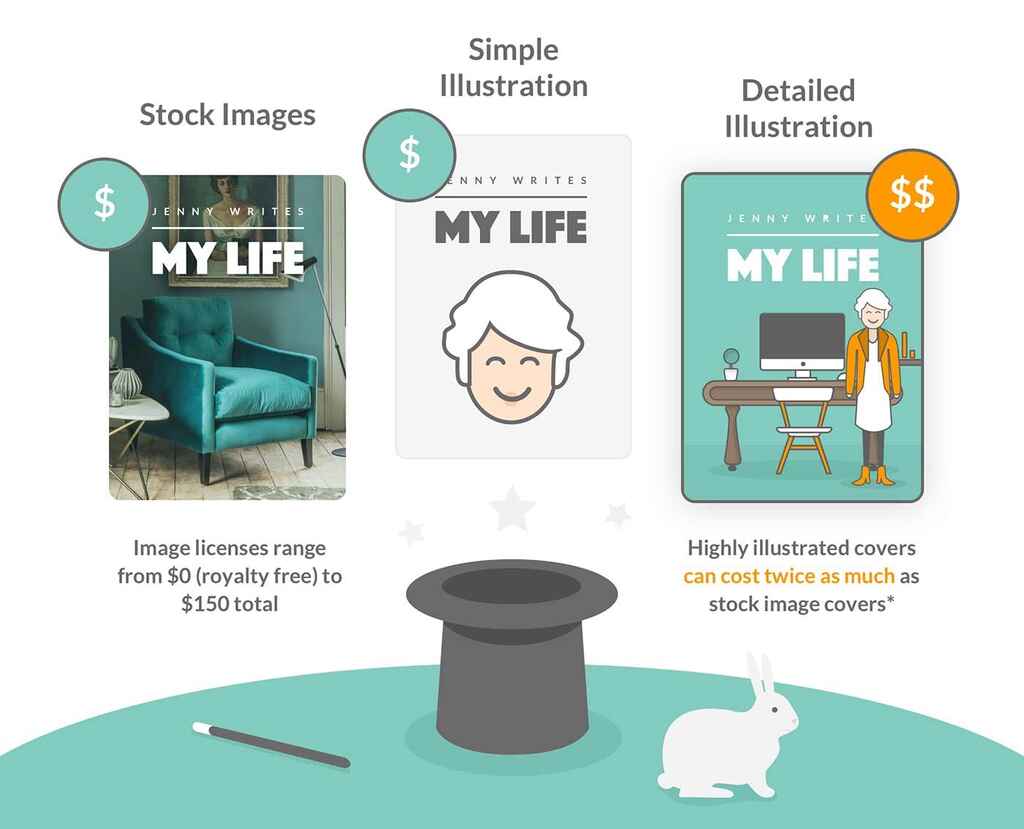
As you become familiar with publishing design, you'll notice that certain genres will lean heavily into a single design style. For example, illustrated covers are common to Literary Fiction and cozy mysteries while thrillers will rely heavily on stock images. Due to the high cost of original photography, they only regularly feature on the covers of celebrity memoirs.
Typography. The words on your cover are vital. As with everything else on the jacket, they should communicate the tone and content of your book — on top of being legible! See how the bestsellers are doing this: do they use serif fonts? Does the title dominate the cover (as is the current trend in psychological thrillers)?
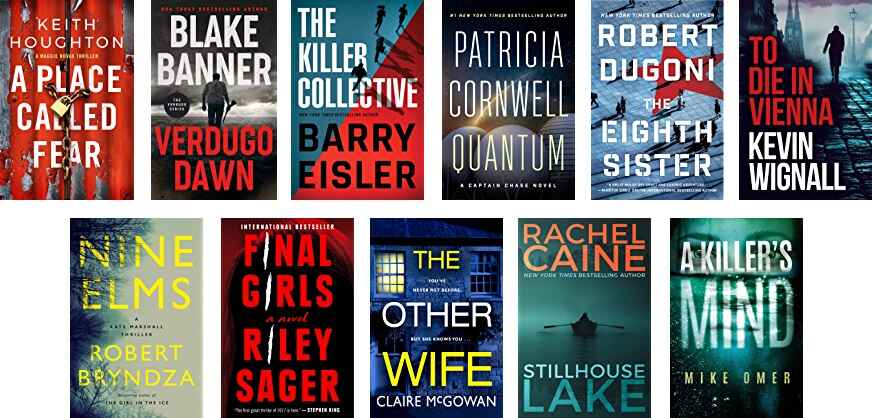
Once you have a good grasp of what's out there in the market, your next step will be to find a designer who's able to work towards those industry trends while also delivering something unique and tailored to your book.
Free course: Book Design 101
Learn the fundamentals of book design, from creating beautiful covers to formatting and typesetting professional-grade interiors. Get started now.
2. Find a cover designer with the right experience
 It's now easier than ever to find someone willing to design your book cover, what with online talent marketplaces like Fiverr and Upwork. But unlike Reedsy, they're more or less open to anyone, meaning you're unlikely to find a designer well-versed in the book market there. All the professionals you can connect with on Reedsy have been asked to present a provable track record of their experience — many have worked at major presses, perhaps on some of your favorite books, so you know you're in good hands.
It's now easier than ever to find someone willing to design your book cover, what with online talent marketplaces like Fiverr and Upwork. But unlike Reedsy, they're more or less open to anyone, meaning you're unlikely to find a designer well-versed in the book market there. All the professionals you can connect with on Reedsy have been asked to present a provable track record of their experience — many have worked at major presses, perhaps on some of your favorite books, so you know you're in good hands.
Looking for a professional cover designer you can trust?
300+ of the best designers are on Reedsy. Sign up to meet them within seconds!
Learn how Reedsy can help you craft a beautiful book.
Regardless of where you look for your designers, here are four tips to help you shortlist suitable candidates:
Browse through their portfolio to gauge their visual styles
Design is a visual medium — so if you don't like how a designer's output looks, then there's no point going any further. This is why you should first check out a designer's portfolio (on their website or freelancer profile), where they show off their range and best work.
As we previously mentioned, not all designers are illustrators. Unless their profile specifically states otherwise, you can assume that they did not create every element of the cover from scratch.

Seek out relevant experience
Very often, what you're paying for is a designer's experience. Though hiring the designer with the most number of years under their belt won't guarantee you the best results. What you should really look for is someone with experience in and passion for your specific genre: a professional who designed jackets for Malcolm Gladwell's bestselling nonfiction titles might not be the perfect fit for your cozy mystery.
On Reedsy, authors can search for designers by the genres listed in their profiles. Every freelancer on our marketplace can select three 'specialty' genres, so the most relevant profiles will always float to the top.
If a designer has worked at a publishing house, they may list their job history and their responsibilities. If they're self-employed (as most freelance designers are) they should give an indication of the types of authors they've worked with.
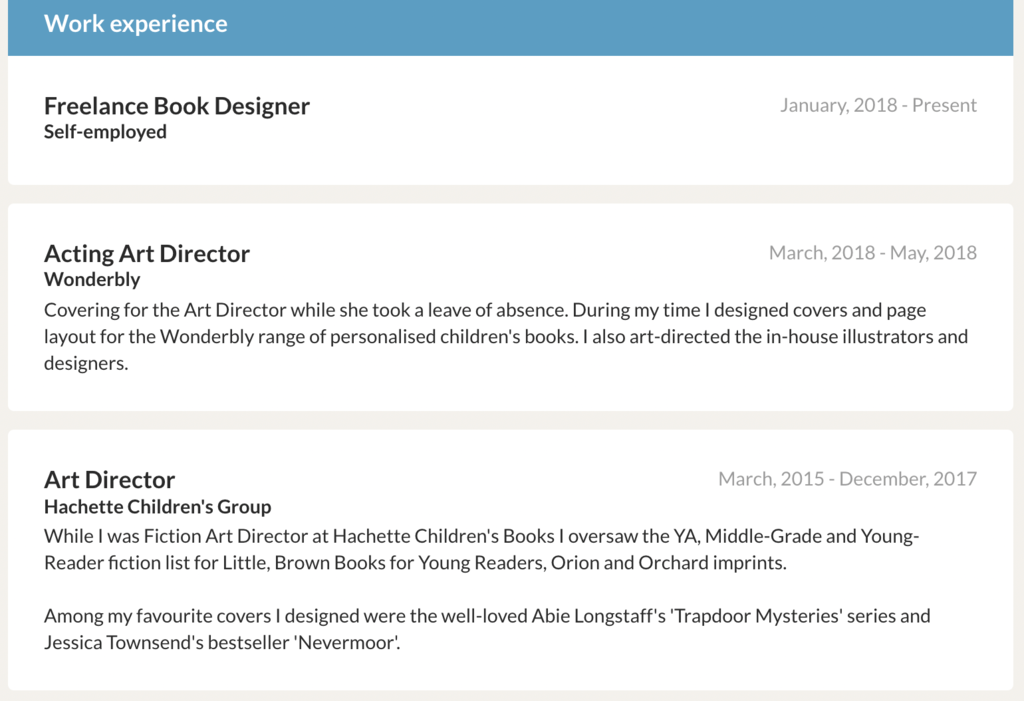
See what their previous clients have to say
When was the last time anyone bought something online without looking at the reviews? Before you commit to working with a cover designer, it's always wise to see what their previous clients think about them. Look for insights on:
- Their communication style;
- What their process is like;
- How proactive they are in offering ideas and concepts;
- Whether their clients are delighted with the results — or merely satisfied.
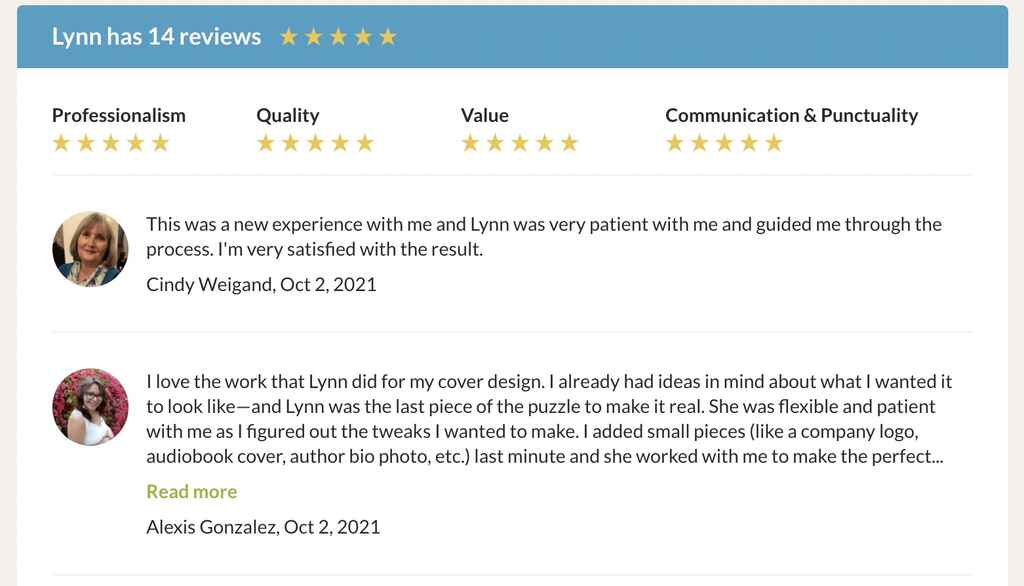
A designer's own professional website will probably only feature cherry-picked positive reviews, so it's best to turn to a freelance marketplace to see some unbiased feedback. At Reedsy, every designer's review is from a verified client that has worked with them through our platform.
💸
What will it cost you to get a professional book cover?
Find out here! Takes 30 seconds.
Once you've found a designer (or made a shortlist of suitable candidates), it's time to make a connection.
3. Create a brief that will get designers excited
Before you and your prospective designer can come to an agreement, they'll need to know a bit about your project. That's where the project brief (or request) comes in.
Make a designer want to work with you
Just as you want a designer who's competent and passionate about this cover art, the designer wants a communicative and collaborative author who appreciates their work. As such, a good brief doesn't just describe the book in stunning detail, it's also your first (and often only) chance to pitch yourself as a collaborator.
"I worked in advertising for 18 years so I can smell it in the air when I know I'm heading into a mire of endless demands," says illustrator and designer Chuck Regan. "I know who's going to get the blame when their book does not sell because of a cover they didn't like.
"Ultimately, my decision to work for an author is based on a sliding scale. What's the subject matter? How much detail is required? What's the timescale? And how much fun do I think it will be to render the cover?"
Important information to include
To help the designer better understand you and your project, you should look to include some or all of the following:
Your book's title and short synopsis. Unless your book is very short, the cover design will likely not read the whole thing. Your synopsis should therefore give them a strong idea of what it's about.
Your genre and target audience. As we've said many times already, your cover design will exist in the context of the other books in your genre. If your designer knows who your title is aimed at, they'll know precisely what's needed.
Format. Paperbacks, hardcovers, and ebooks all require different things from a designer. Ebooks only need a front cover; paperbacks also need a spine and back cover design; while hardback books have flaps to contend with. If you know your book's trim size (dimensions), then now's a good time to share that.
Design inspiration. This is where you can deploy all that work you did in Step 1! By sharing the covers you discovered during your research, the designer can begin to see what you want in terms of aesthetics.
Deadline. Good designers may be booked up a few months in advance, so send them your requests nice and early. That way, you can be flexible with your deadline and have a better chance of snagging your first-choice designer.
With this information, a designer should be able to provide you with a quote and a project timeline. Depending on your designer's flexibility, you can negotiate anything from the number of initial concepts and revisions they deliver to your payment schedule.
4. Pick your favorite concept and give feedback
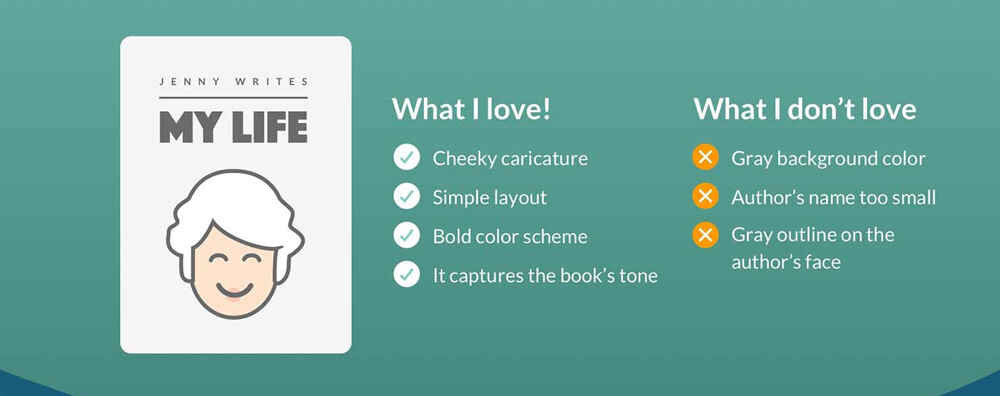 Though every collaboration is different, most designers will provide you with a few initial concepts to choose from. For example, when author Niyati Tamaskar hired Reedsy designer Asya Blue to create a cover for her memoir Unafraid, the original brief suggested using a peacock feather as the central image. Blue returned with three mockups that played into this feather motif.
Though every collaboration is different, most designers will provide you with a few initial concepts to choose from. For example, when author Niyati Tamaskar hired Reedsy designer Asya Blue to create a cover for her memoir Unafraid, the original brief suggested using a peacock feather as the central image. Blue returned with three mockups that played into this feather motif.

As it turned out, Niyati didn't go for any of these options. Instead, her designer suggested a different approach based on her conversations with the author — this resulted in a final design that Niyati was delighted with.
Tip: While it's helpful to provide examples of your inspirations, you will usually get the best result if you aren't too prescriptive in your brief. Let your designer bring their ideas to the table.
Provide specific feedback
Once your designer returns with their initial concepts, you need to be able to tell them which details you like and why. Perhaps you like the imagery in one version but the typography in another: this is useful feedback that can guide the next iterations of the design.
Your agreement with the designer will likely state the number of design rounds your cover will receive, so you won't have the luxury of endless tweaks and redesigns. This is why it's so important to be very clear about what you like and what you don't like.
Test out the concepts with real readers
If you want to be really methodical about picking a concept, you could test the designs out in the real world. A few years ago, we ran an experiment with two concurrent ad campaigns on Facebook. Each campaign was identical except for the cover design featured in the spot. By tracking how many people saw and clicked on each ad, we could tell which concept was objectively better at doing its job — which was to sell the book.

If you wish to use this approach to choose between concepts, mention this to your designer in your brief. This will ensure that they can plan for a testing period during the design process and that they can license any images you wish to test.
Free course: Facebook Ads for Authors
Harness the single most powerful ad platform for authors and start selling more books today.
Once you've settled on a concept, it's time to get into the nitty-gritty.
5. Tweak and refine your final design
Now that you're in the home stretch, don't lose track of your goal! The devil is in the details, and there will be plenty of details for you to pore over. While your designer is best placed to lead the final stages of the design, they will seek out your personal preference on elements like typefaces and the specific color palette.
When finalizing his cover for Life in the Loop , for instance, Reedsy designer Jason Anscomb presented the author with a number of suitable color options to choose from.
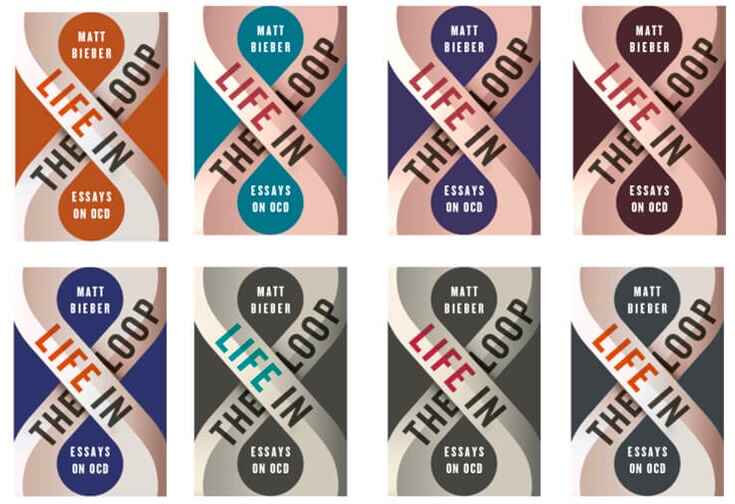
Touch base with a phone call
At any point during the collaboration, it can be helpful to jump on a call and talk things through with your designer. A quick conversation over Zoom or Skype — can often smooth out any reservations or misunderstandings you may be experiencing. The designer can even share their screen and talk you through their concepts and adjustments.
Receive your final formats
 Once you have both agreed on the final design, it's then up to the designer to deliver your files in a format that is compatible with your online retailers and print-on-demand vendors.
Once you have both agreed on the final design, it's then up to the designer to deliver your files in a format that is compatible with your online retailers and print-on-demand vendors.
Depending on what you've agreed on, they might send you a variety of design formats to be used on digital ads, social media updates, or on your website. Even if you're not printing physical copies of your book, your designer can create appealing mockups that you can use to promote your book!
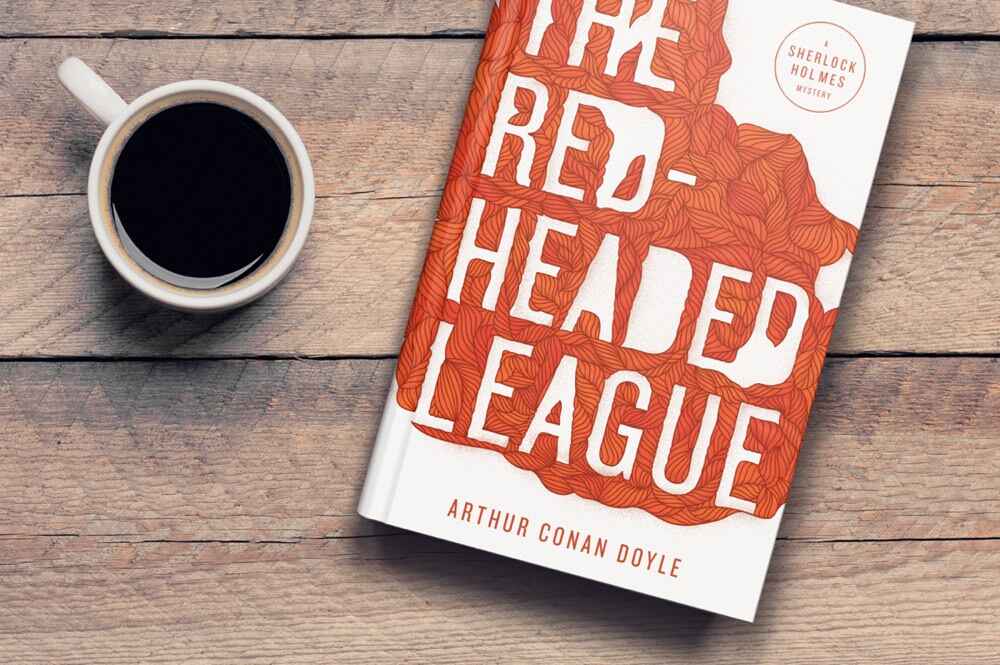
Annabel Brandon 's digital-only design has been composited into this photo. Looks pretty real, right?
And there you have it: your very own professionally designed book cover. It's ready to hit the shelves and attract readers with its undeniable good looks and all-important genre indicators!
For more help using your cover to attract new readers, make sure you download our free ebook, How to Market a Book: Overperform in a Crowded Market.
Want to learn more? Download our full infographic on Book Cover Design.
Best Cover Designer for Bmaw Erotica Books
Source: https://blog.reedsy.com/book-cover-design/
0 Response to "Best Cover Designer for Bmaw Erotica Books"
Post a Comment